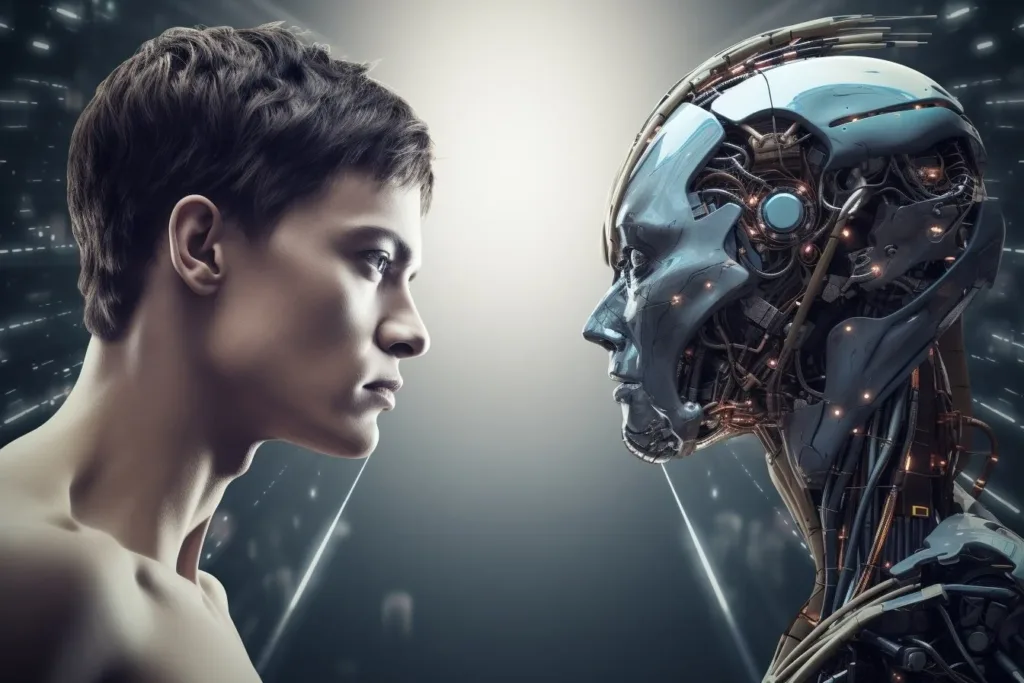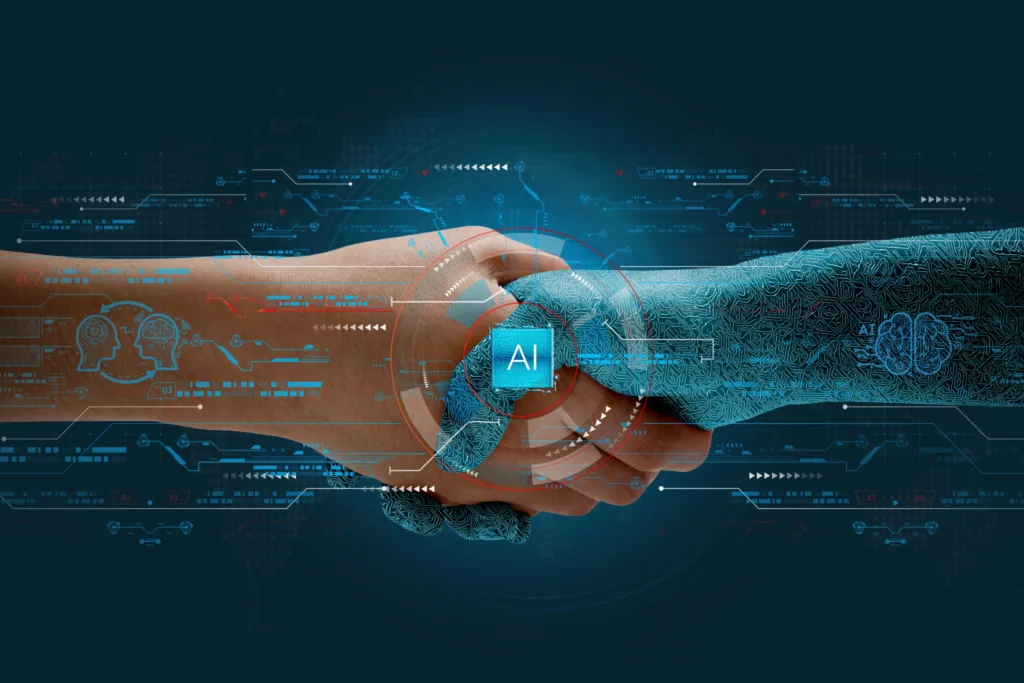Before defining AI let us define what is intelligence
Introduction
Before we define artificial intelligence, it’s essential to address a crucial concept: intelligence itself. But what exactly is intelligence? To this day, there is no universally accepted definition.
One of the challenges in discussing intelligence is its ambiguity. While some may argue that it relates to abstract thinking or self-awareness, a precise definition remains elusive.
In essence, intelligence can be understood as the ability to independently solve a problem that a person encounters for the first time, without prior knowledge or assistance from others.
While we may encounter machines and programs that seem to exhibit intelligent behavior, it’s important to recognize that this is not true intelligence. Instead, these systems possess vast capacities for storing, retaining, and processing data far beyond human capability. They operate at incredible speeds, executing complex algorithms and models that would be impossible for a human to manage, even with a lifetime of dedicated effort. This advanced processing can create the illusion that machines are capable of thought.

Human versus Machine
Despite advances in technology, we should not assume that machines are acting intelligently. Intelligence is a uniquely human trait, a reflection of our status as God’s creation, whereas machines are ultimately man-made.
To illustrate, consider a comparison between a computer and an airplane: while the airplane can indeed fly, its flight and design are fundamentally different from those of birds. In the same way, a machine’s so-called intelligence is not comparable to human intelligence. Although machines can surpass humans in data storage and processing speed, they lack awareness and consciousness of their surroundings and the processes occurring within them. Thus, any superior performance is not a sign of true intelligence, but rather a result of their design and capabilities.
Impossible to simulate the organism’s human neural functions
Some researchers have struggled to replicate the nervous systems of even the simplest living organisms. Take **Caenorhabditis elegans**, a widely studied worm with approximately 300 neurons, whose interconnections are thoroughly mapped. Despite this simplicity, connectionist models have been unable to simulate even this basic organism’s neural functions effectively.
Furthermore, some researchers in the field of artificial intelligence believe that pursuing Artificial General Intelligence (AGI)—machines capable of human-like thinking—may not be a worthwhile endeavor.
Definition of AI:
Artificial intelligence is a scientific discipline that has been around since the 1940s.
Artificial intelligence refers to computer systems or robots that can perform complex tasks traditionally reserved for humans, such as reasoning, decision-making, and problem-solving.
AI is a very broad discipline encompassing a very wide range of different types of artificial intelligence technologies such as reactive AI, limited memory AI, theory of mind AI, and self-aware AI.
Today, the term “AI” refers to a wide range of technologies that drive many of the services and products we use daily, including real-time support applications, translation tools, and content generators. But do these technologies genuinely reflect our understanding of artificial intelligence? The reality of AI is much more complicated and nuanced than it may seem, and we invite you to explore its deeper implications throughout this website.
On this website, we will learn more about artificial intelligence, what it does, and how it does it. We will go deeper into the different technologies underlying its structure, its types, and what it can and cannot do. Ultimately, we will also learn about some of its benefits, ethics, and dangers and suggest flexible courses and other resources to help us expand our knowledge of AI.
Here is what we will be covering soon:
Artificial Intelligence (AI)
different technologies underlying AI, their structures, and their different types
Narrow AI (Weak AI)
This type of AI is designed to perform a specific task or a limited range of tasks.
Generative AI
Often referred to as Gen AI, is a type of artificial intelligence that is designed to create new content, whether that be text, images, music, or other forms of media.
General AI (Strong AI)
This is a theoretical type of AI that possesses the ability to understand, learn, and apply intelligence broadly, similar to a human
Super-intelligent AI
This refers to a hypothetical AI that surpasses human intelligence across all fields, including creativity, problem-solving, and emotional intelligence
Limited Memory
These systems can use past experiences to inform current decisions, like self-driving cars that analyze traffic data.
Theory of Mind
This type involves understanding emotions and social cues, which can enhance interactions with humans. This is still in the research phase.
Self-aware AI
This is the most advanced form, where AI has consciousness and self-awareness. This type currently doesn’t exist.
Machine learning (ML)
It is a field of study in artificial intelligence concerned with the development and study of statistical algorithms that can learn from data and perform tasks without explicit instructions.
Machine Learning Models
They learn patterns from data. Examples include supervised learning (e.g., regression and classification), unsupervised learning (e.g., clustering), and reinforcement learning.
Deep Learning Models
A subset of machine learning that uses neural networks with multiple layers to analyze complex data sets, such as images and natural language.
Natural Language Processing (NLP) Models
They are designed to understand and generate human language, used in applications like chatbots, translation, and sentiment analysis.
Generative Models
They create new content based on the input data, including generative adversarial networks (GANs) and variational autoencoders (VAEs).
Computer Vision Models
They interpret and understand visual information from the world, often used in facial recognition, object detection, and image segmentation.
Transformers
They are a type of deep learning architecture that has revolutionized how we process and understand sequential data by using a mechanism called self-attention to weigh the significance of different words in a sentence or sequence, allowing them to capture contextual relationships more effectively than previous models like recurrent neural networks (RNNs).
Artificial neural networks
They refer to a collection of algorithms and technologies designed to simulate human cognitive processes.
Feedforward Neural Networks
Data flows in one direction from input to output. It is the simplest type of ANN.
Convolutional Neural Networks (CNN)
They are used for image and speech processing. They apply convolution operations to capture spatial features.
Recurrent Neural Networks (RNN)
They are suitable for sequential data. They have connections that form cycles, allowing them to maintain a memory of previous inputs
Modular Neural Networks
They Consist of multiple independent networks that perform different tasks.
Supervised Learning
In this approach, the model is trained on a labeled dataset, which means each training example is paired with an output label.
Unsupervised Learning
The model works with unlabeled data and tries to find patterns or structures within that data.
Reinforcement Learning
This type involves training an agent to make decisions by taking actions in an environment to maximize some notion of cumulative reward. It learns from the consequences of its actions, refining its strategies over time.
Semi-supervised learning
(Combining labeled and unlabeled data) and transfer learning (applying knowledge gained in one context to another).
Large Language Models (LLMs)
They are a type of artificial intelligence that uses vast amounts of data and advanced neural network architectures to understand and generate human-like text.
AI models
They are algorithms or systems designed to perform tasks that typically require human intelligence. They are structured to analyze data, learn from it, make decisions, and improve over time.
AI agents
They are systems or entities that utilize artificial intelligence to perform tasks autonomously or semi-autonomously. These agents can perceive their environment, make decisions based on that perception, and take actions to achieve specific goals.

Conclusion
We must recognize that artificial intelligence is a powerful tool that can greatly benefit humanity. Instead of viewing it as something frightening that causes panic or denying its existence, we should embrace it positively. By seeing AI as a friend and an assistant, we can enhance our productivity and spark creativity and innovation.
It is crucial for the international community to prioritize the regulation of artificial intelligence. We need to establish clear laws, controls, and regulations to ensure its responsible use, along with stringent penalties for those who misuse it.

